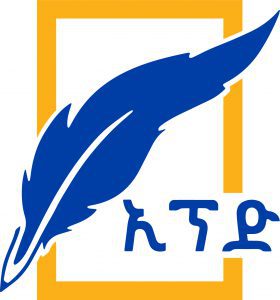
• Cairo deliberately overlooks alternative water sources to over utilize the Nile: Experts
Egypt, in what could be said a malign intent to perpetuate its monopoly over the waters of the Nile, has been propagating as the Nile is the sole source of water and it stubbornly sees no alternatives to meet its lavish water demands.
But experts present solid argument that Cairo owns multiple yet unheeded alternative sources of water which the country wittingly leave untapped to over utilize the Nile. Perhaps, this mentality, as many argue, is the very reason as to why Egypt is green-eyed on projects like the Grand Ethiopian Renaissance Dam (GERD) besides over exploitation of the waters of the Nile, ultimately leading to false rhetoric that the common river is the sole servant of Cairo.
However, experts counter argue that Egypt’s years of short-sighted, yet carefully crafted, narrative goes against the reality on the ground. The experts argue citing scientific evidences that Egypt has other ample opportunities.
Egypt has a trillion cubic meters of underground water reserve while the development of technology enables desalination of sea water easier; Egypt is a water-rich country in this regard than Ethiopia, according to him.
Eng. Tsega Tibebu also presents his argument that there remain ample alternatives for Egypt and other Nile basin countries to satisfy their rising water demands. Among which is the Nubian Sandstone Aquifer System extends all over Egypt, eastern Libya, northern Chad and northern Sudan. Recent estimates show that it is about 450,000 cubic kilometers in volume.To cite an example, the Nubian Sandstone. Aquifer development scheme by Libya could be mentioned. The successful irrigated farm development by that nation has helped it to be an exporter of agricultural products, and has led it to attain a highest standard of living. A similar development scheme could relive Egypt from complete dependence on the Blue Nile River, he adds.
He also sees desalination of water from Red Sea and Mediterranean Sea as a potential option to meet water demands using new technologies and knowledge. He says that humanity is now living in what is known to be the twenty first century and decades have passed since man has split the atom, and now we are proceeding to what is known as ‘fusion energy’.
“Whatever the progress in that direction, the desalination of sea water is already becoming economically feasible due to cheap electric energy. As a result, the desalination of water from either the Red Sea or the Mediterranean Sea proves to be an attractive alternative source of water for Egypt and Sudan.”
The flow of the mighty Congo River is estimated to be 40,000 cubic meters per second, most of which empties into the Atlantic Ocean. It has a gigantic electric generating potential of about 44,000 megawatts, he aruges, adding that common sense shows that a considerable volume of water could be transferred to the Nile valley for any required purposes downstream.
“It is therefore an appropriate time for all the Nile valley countries to forge a cooperative union for the proper management of their natural resources.”
He accentuated that the alternatives should be preceded by preparation of a Nile valley water resources master plan for proper sequencing of feasible and sustainable projects.
According to reports by the UN’s Food and Agriculture Organization (FAO), the annual precipitation in Egypt is significant that could enable the country to get an estimated 51 billion cubic meters, which is nearly equivalent to the country’s claim of “share” of Nile waters.
Among the alternatives are the Nubian sandstone aquifer which covers 50% of the surface area of Egypt, with productivity from 5 m3/hr to more than 300 m3/hr with the Fissured aquifer covering 50% of the surface area of Egypt, with productivity from 5 m3/hr to more than 300 m3/hr.
Even, Al-Haram online, Egypt based media outlet, reported that Egypt has failed to take advantage of this water resource; only 1.3 billion cubic meters per year are currently in use, as this is the amount that falls on the Nile Delta region. Rainwater, if properly used, could be one of the most important sources of water.
Egypt has also huge natural mineral water resources. However, most of them have not yet been significantly exploited. The total amount of deep groundwater has been estimated at about 40,000 BCM.
Egypt’s tendency to accuse Ethiopia over the use of Abay (Blue Nile) is unacceptable. It should in the first place probe its own water mismanagement that leads to a 20-percent loss of the waters of the Nile every year. There is no doubting the fact that Egypt is carelessly using the Nile waters, said Yonas Biru (Ph.D.) at a high-level meeting held lately on issues relating to GERD.
The Ethiopian Herald July 24, 2020
BY DESTA GEBREHIWOT





